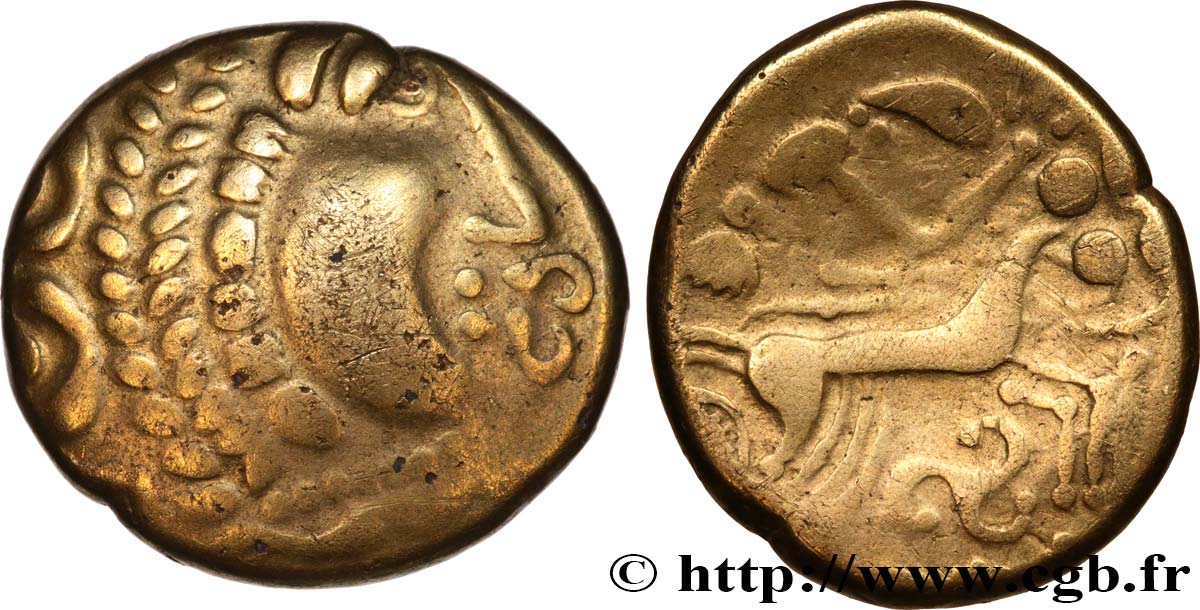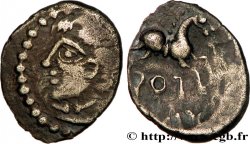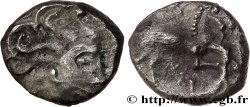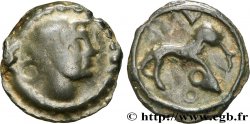Live auction - bga_498275 - GALLIA - ÆDUI (BIBRACTE, Area of the Mont-Beuvray) Statère du type du quart de Beaune
Чтобы принять участие в торгах, вы должны войти в систему и стать подтвержденным участником аукциона. Войдите, чтобы сделать ставку. Ваш аккаунт будет подтвержден в течение 48 часов. Не ждите до закрытия торгов, чтобы зарегистрироваться.Сделав ставку на данный товар, вы вступаете в юридическое соглашение на покупку выбранного товара и нажатием кнопки «Сделать ставку» подтверждаете принятие вами условий интернет-аукционов cgb.fr.
Ставка может бить сделана только в полном эквиваленте евро. Торги закроются согласно времени, указанному в описании товара, все ставки, сделанные после закрытия торгов, учитываться не будут. Не следует откладывать предложение вашей ставки до последнего момента, так как система может не успеть обработать вашу заявку, и ваша ставка не будет принята. Более детальную информацию вы найдёте здесь: FAQ по интернет-аукционам.
Все ставки победителей подлежат комиссии 18%.
Все ставки победителей подлежат комиссии 18%.
| Оценить : | 6 500 € |
| Цена : | 3 800 € |
| Максимальная предлагаемая цена : | 3 800 € |
| Конец торгов : | 11 September 2018 15:11:28 |
| Участников : | 1 Участников |
Тип Statère du type du quart de Beaune
Дата: Ier siècle avant J.-C.
Монетный двор / Город: Autun (71)
Металл: gold
Диаметр: 19 mm
Ориентация осей монеты: 9 h.
Вес: 7,20 g.
Редкость: R2
Комментарии о состоянии
Rare statère frappé sur un flan large et ovale, avec les types de droit et de revers complets, mais de frappe molle. Droit avec un beau visage sur un flan un tout petit peu court, avec des micro rayures sur la joue. Le revers est idéalement centré mais de frappe faible
Ссылки в каталоге: :
Происхождение:
Cet exemplaire provient de MONNAIES 43, n° 1148 et de la collection du Docteur J.-M. F
Лицевая сторона
Аверс: легенда: ANÉPIGRAPHE.
Аверс: описание: Tête à droite ornée d'une couronne de lauriers partant du front et rejoignant la nuque.
Обратная сторона
Реверс: легенда: ANÉPIGRAPHE.
Реверс: Описание: Bige à droite conduit par un aurige stylisé en bord de flan, un triskèle sous les chevaux.
Комментарий
Lors de la vente du n° 882 de MONNAIES 32 (pièce de couverture), ce très rare type de statère était sous-documenté, connu qu'à quelques unités. Cet exemplaire, bien que de frappe molle, est exceptionnellement complet.
La proximité du revers avec un type plus traditionnel est sans doute la raison pour laquelle il a été amalgamé à une série bien connue bien qu'il s'en distingue tant au droit qu'au revers ! Il s'agit du statère correspondant au quart connu sous l'appellation du type de Beaune attribué aux Éduens.
Le récent ouvrage “ Le trésor de Tayac” reprend cette variété particulière sous la série F6 des statères au triskèle. Cinq statères y sont représentés ; un qui pourrait provenir de Tayac, celui de la vente Mioche - coll. de Saulcy (BN. 3693), les deux de Zurich et celui de la collection Luneau dispersée en 1923 par Platt. Avec celui de MONNAIES 32 et celui-ci, cette publication porte à sept le nombre d’exemplaires publiés (auxquels il faut rajouter un exemplaire vendu par Leu et un autre en collection privée), soit neuf exemplaires au total !.
La proximité du revers avec un type plus traditionnel est sans doute la raison pour laquelle il a été amalgamé à une série bien connue bien qu'il s'en distingue tant au droit qu'au revers ! Il s'agit du statère correspondant au quart connu sous l'appellation du type de Beaune attribué aux Éduens.
Le récent ouvrage “ Le trésor de Tayac” reprend cette variété particulière sous la série F6 des statères au triskèle. Cinq statères y sont représentés ; un qui pourrait provenir de Tayac, celui de la vente Mioche - coll. de Saulcy (BN. 3693), les deux de Zurich et celui de la collection Luneau dispersée en 1923 par Platt. Avec celui de MONNAIES 32 et celui-ci, cette publication porte à sept le nombre d’exemplaires publiés (auxquels il faut rajouter un exemplaire vendu par Leu et un autre en collection privée), soit neuf exemplaires au total !.








 Cообщить об ошибке
Cообщить об ошибке Распечатать страницу
Распечатать страницу Отправить мой выбор
Отправить мой выбор Задать вопрос
Задать вопрос Consign / sell
Consign / sell
 Информация
Информация



